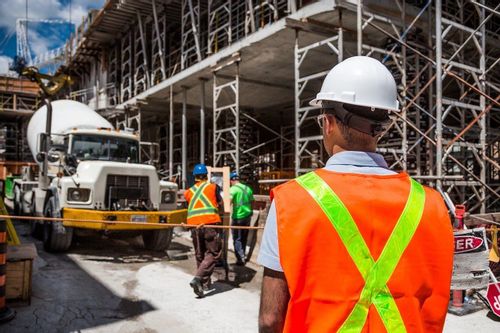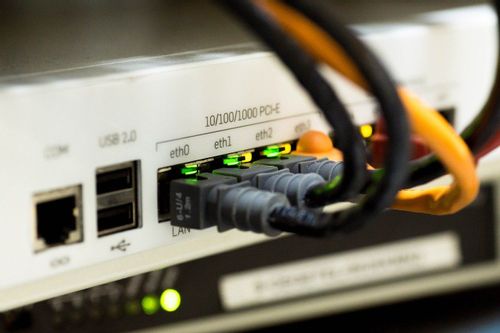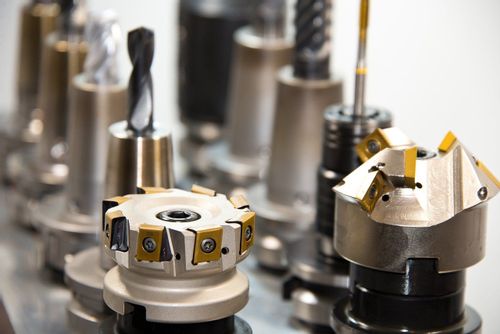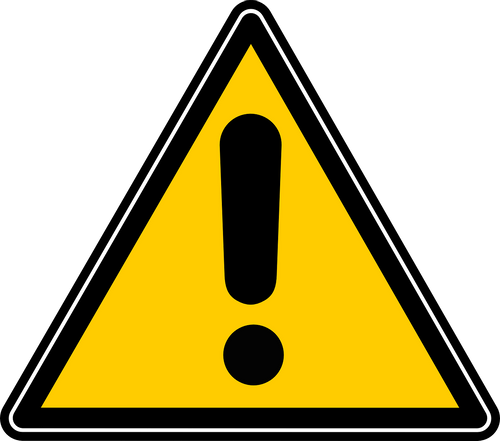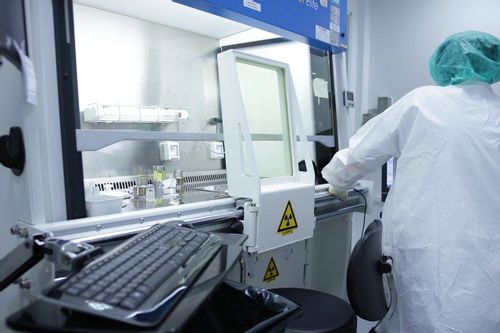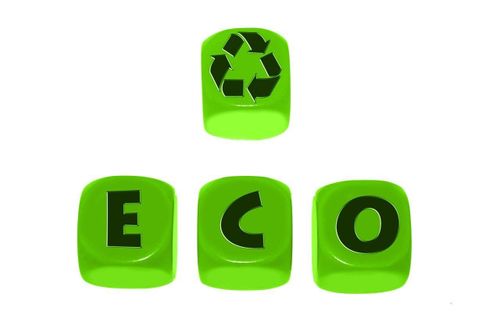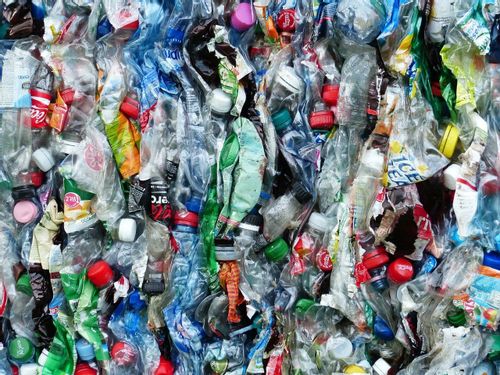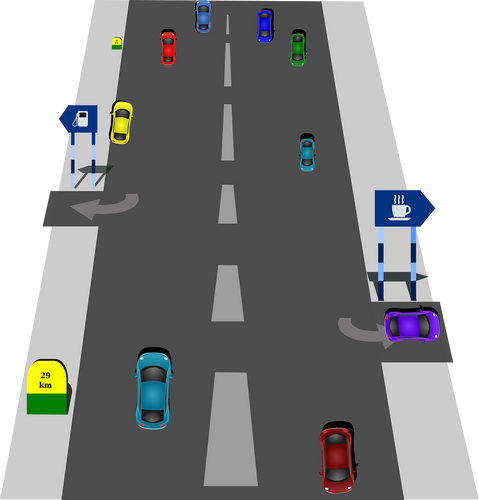Standards Packages
iTeh together with SIST has developed and compiled a comprehensive collection of standard packages to support your standard requirements. Our packages cover an array of content that includes quality management, risk management, road vehicles, machine safety, and much more. With over 200 packages to choose from, you are sure to find a collection to suit your standard needs.
Latest Standards
This document specifies requirements for stainless steel (shot and irregulars), as supplied for blast-cleaning processes. It specifies ranges of particle sizes, together with corresponding grade designations. Values are specified for hardness, density, defect/structural requirements, metallographic structure and chemical composition. The requirements specified in this document apply to abrasives supplied in the new condition only. Test methods for metallic blast-cleaning abrasives are given in the various parts of ISO 11125. Stainless steel shot and irregulars are used in both static and site blasting equipment. They are most often selected where there is a possibility for the recovery and re-use of the abrasive. NOTE 1 Although this document has been developed for preparation of steelwork, these materials are predominantly used for non-ferrous substrates. The properties specified will generally be appropriate for use when preparing other material surfaces, or components, using blast-cleaning techniques, and can be used for applications where no subsequent coating is applied. NOTE 2 Whenever dissimilar metals are used together, galvanic corrosion can occur.
- Standard6 pagesEnglish languagesale 15% off
- Draft6 pagesEnglish languagesale 15% off
- Draft6 pagesEnglish languagesale 15% off
This document specifies security block (SB) formats (see ISO/IEC 19785-1) registered in accordance with ISO/IEC 19785-2 as formats defined by the Common Biometric Exchange Formats Framework (CBEFF) biometric organization ISO/IEC JTC 1/SC 37. This document also specifies registered SB format identifiers. NOTE The SB format identifier is recorded in the standard biometric header (SBH) of a patron format (or defined by that patron format as the only available SB format). The general-purpose SB format specifies whether the biometric data block (BDB) is encrypted or the SBH and BDB have integrity applied (or both). The general-purpose SB format can include ACBio instances (see ISO/IEC 24761). This SB provides all necessary security parameters, including those used for encryption or integrity. This document does not restrict the algorithms and parameters used for encryption or integrity, but it provides for the recording of such algorithms and parameter values. This document does not cover profiling to determine what algorithms and parameter ranges can be used by the generator of an SB for a particular application area, and hence what algorithms and parameter ranges have to be supported by the user of an SB. The second SB format is more limited but simpler. In particular, it cannot contain ACBio instances and does not support encryption of the BDB. The general-purpose SB format in XML provides for specification of whether the BDB is encrypted or the SBH and BDB have integrity applied (or both).
- Standard20 pagesEnglish languagesale 15% off
- Draft18 pagesEnglish languagesale 15% off
- Draft18 pagesEnglish languagesale 15% off
This document specifies the limits of sizes for major, pitch and minor diameters of ISO general purpose metric screw threads (M) conforming to ISO 261 and having basic and design profiles in accordance with ISO 68-1. This document is applicable to the metric fastening screw threads with the ten tolerance classes (4H, 5H, 6H, 7H, 6G, 4h, 6h, 6g, 6f and 6e) recommended in ISO 965-1.
- Standard72 pagesEnglish languagesale 15% off
- Draft72 pagesEnglish languagesale 15% off
- Draft72 pagesEnglish languagesale 15% off
This document specifies the LIN protocol including the signal management, frame transfer, schedule table handling, task behaviour, status management, and commander and responder node. It contains also OSI layer 5 properties according to ISO 14229-7 UDSonLIN-based node configuration and identification services (SID: B016 to B816) belonging to the core protocol specification. A node (normally a commander node) that is connected to more than one LIN network is handled by higher layers (i.e. the application) not within the scope of this document.
- Standard74 pagesEnglish languagesale 15% off
- Draft74 pagesEnglish languagesale 15% off
- Draft74 pagesEnglish languagesale 15% off
This document provides basic performance requirements and corresponding test methods for containment high efficiency filtration units (CHEFUs). This document is applicable to the devices used to remove harmful bio-aerosol in biosafety facilities and similar controlled environment. This document is not applicable to a filtration unit for removing radioactive aerosol.
- Standard21 pagesEnglish languagesale 15% off
- Draft21 pagesEnglish languagesale 15% off
- Draft21 pagesEnglish languagesale 15% off
This document specifies a test method for determining the transverse flexibility (troughability) of a conveyor belt, expressed as a ratio, F/L. The method is not suitable or valid for light conveyor belts as described in ISO 21183-1. NOTE The transverse “flexibility” determined by the method described in this document is only indirectly associated with the inverse of flexural modulus as specified in ISO 178. Nor does it take into consideration the differences in “flexibility” as exhibited by three-point and four-point bending, which takes account of the flexural strain and the thickness of the test piece.
- Standard6 pagesEnglish languagesale 15% off
- Draft5 pagesEnglish languagesale 15% off
- Draft5 pagesEnglish languagesale 15% off
This document specifies a method used for the determination of the temperature of deflection under load of specified plastics (including fibre-reinforced plastics in which the fibre length is, prior to processing, greater than 7,5 mm) under defined conditions. A number of different test conditions are defined, depending on the anticipated specimen dimensions. For additional information, see ISO 75-1:2020, Clause 1.
- Standard11 pagesEnglish languagesale 15% off
- Standard12 pagesFrench languagesale 15% off
- Draft11 pagesEnglish languagesale 15% off
- Draft11 pagesEnglish languagesale 15% off
- Draft14 pagesFrench languagesale 15% off
This document specifies the criteria and minimum requirements for selecting internal coatings (often referred to as linings) for pressurized service within process vessels. The document provides the following: — key factors influencing coating selection; — generic composition of test liquids which can be used as references when evaluating supporting testing evidence for coatings; — principal test methods to be used as evidence of performance when selecting suitable coatings; — supporting evidence to be used in evaluating coatings that is relevant to the potential end use. This document covers types of coatings that are generally available, with properties that are known and documented. It also covers other materials to be evaluated and qualified for use. This document is applicable to process vessels coated at the new construction phase. It can be applied only where the coating is applied directly to the substrate. This document does not cover requirements related to metallic coatings nor weld overlay materials.
- Standard35 pagesEnglish languagesale 15% off
- Standard36 pagesFrench languagesale 15% off
- Draft35 pagesEnglish languagesale 15% off
- Draft35 pagesEnglish languagesale 15% off
- Draft38 pagesFrench languagesale 15% off
This document specifies requirements and their test methods for sinus membrane elevators used during the placement of dental implants for sinus floor lifting. It also specifies the requirements for their marking and labelling.
- Standard4 pagesEnglish languagesale 15% off
- Standard4 pagesFrench languagesale 15% off
- Draft4 pagesEnglish languagesale 15% off
- Draft4 pagesEnglish languagesale 15% off
- Draft6 pagesFrench languagesale 15% off
- Standard2 pagesEnglish languagesale 15% off
- Standard2 pagesFrench languagesale 15% off
- Draft2 pagesEnglish languagesale 15% off
- Draft2 pagesEnglish languagesale 15% off
- Draft4 pagesFrench languagesale 15% off
This document covers safety requirements for powder actuated fixing and hard marking tools which operate with an intermediate member (piston) and are handled manually.
This document deals with all significant hazards (see Annex I), hazardous situations and events relevant to powder actuated fixing and hard marking tools, when they are used as intended and under conditions of misuse which are reasonably foreseeable (see Clause 4). It deals with the significant hazards in the different operating modes and intervention procedures as referred to in EN ISO 12100:2010, 5.4, 5.5, 5.6.
Although the safe use of powder actuated tools depends to an important extent on the use of appropriate cartridges and fasteners, this document is not formulating requirements for the cartridges and fasteners to be used with the tools (see Clause 6).
This document applies to tools designed for use with cartridges with casings made of metal or plastic and with solid propellant and containing a minor quantity of primer mix with a composition different from that of the main propellant.
This document applies to tools designed for use with single cartridges or with cartridges collated in disks or in strips.
The fixing tools in the scope are those intended for use with fasteners made from metal.
NOTE Information about cartridges can be found either in EN 16264:2014 or the publication of the Permanent International Commission for the Proof of Small Arms (C.I.P.).
This document is not applicable to powder actuated fixing and hard marking tools which are manufactured before this document’s date of publication.
- Standard70 pagesEnglish languagesale 10% offe-Library read for1 day
This document acknowledges the field of application for taps, shower outlets, shower sets and shower systems used in water supply systems with a pressure range of (0,05 to 1,0) MPa [(0,5 to 10) bar].
The tests described in this document are type tests (laboratory tests) and not quality control tests carried out during manufacture.
This document covers:
— PN10 taps;
— PN5 shower outlets;
— PN5 shower sets;
— PN10 shower systems.
The following products are excluded from this document:
— shower taps on its own;
— taps for filling bathtubs;
— the tub filling function of combined taps;
— the function of a tap that delivers e.g. boiling water or sparkling water, etc.;
— body or side jet showers.
The conditions of use for taps and shower systems are given in Table 1. The conditions of use for showers sets and shower outlets are given in Table 2.
Table 1 — Conditions of use for taps and shower systems
Water supply system Operating range of taps and shower systems
Limits Recommended
see Figure 1 dynamic pressure
≥ 0,05 MPa
(0,5 bar)
static pressure
≤ 1,0 MPa
(10,0 bar) dynamic pressure b
(0,1 to 0,5) MPa
[(1,0 to 5,0) bar]
temperature ≤ 70 °C a ≤ 65 °C
a This maximum temperature limit can only be reached for short durations not greater than 1 h.
b Measured at the point of discharge.
NOTE Taps and shower systems for use at pressures lower than those in Table 1 are not covered by this standard.
Table 2 — Conditions of use for shower outlets and shower sets
Water supply system Operating range of showers
Limits Recommended
see Figure 1 dynamic pressure
≥ 0,05 MPa
(0,5 bar)
static pressure
≤ 0,5 MPa
(5,0 bar) dynamic pressure
(0,1 to 0,3) MPa
[(1,0 to 3,0) bar]
temperature ≤ 70 °C a ≤ 42 °C
a This maximum temperature limit can only be reached for short durations not greater than 1 h.
Key
1 cold water
2 hot water
3 mains supply pipe (supply pressures up to 10 bar)
4 water heater
Figure 1 — Supply system with a pressure range of (0,05 to 1,0) MPa [(0,5 to 10) bar]
Health and quality requirements in accordance to European and national legislation for final materials in contact with water intended for human consumption are not covered by this document.
- Standard41 pagesEnglish languagesale 10% offe-Library read for1 day
This document defines the requirements for the design, manufacturing, quality control, assembly, testing, and documentation of ball, check, gate, plug, and axial on–off valves for application in subsea pipeline systems for the petroleum and natural gas industries.
This document applies to ASME Class 150, 300, 600, 900, 1500, and 2500 valves intended for use in subsea pipelines. Use of these valves for any other purpose is outside the scope of this document.
This document is a supplement to API 6DSS, 3rd edition (2017), with Addendum 1 (2019) and Addendum 2 (2022), including Errata 1-3, the requirements of which are applicable with the additions specified in this document.
- Standard10 pagesEnglish languagesale 10% offe-Library read for1 day
This document specifies general requirements for showcases for safe and secure display of cultural heritage objects complying with the requirements for preventive conservation. This document focuses on so-called passive showcases, those with unpowered climate conditioning systems. The role a showcase plays in preventive conservation is determinable via a site-specific risk assessment of relevant factors, which are mentioned in this document.
- Standard46 pagesEnglish languagesale 10% offe-Library read for1 day
- Amendment14 pagesEnglish languagesale 10% offe-Library read for1 day
This document specifies the technical delivery requirements for seamless and welded butt-welding fittings (elbows, concentric and eccentric reducers, equal and reducing tees, caps) made of austenitic and austenitic-ferritic (duplex) stainless steel in two test-categories which are intended for pressure purposes at room temperature, at low temperature or at elevated temperatures, and for the transmission and distribution of fluids and gases.
It specifies:
a) type of fittings;
1) type A: butt-welding fittings with reduced pressure factor;
2) type B: butt-welding fittings for use at full service pressure;
b) steel grades and their chemical compositions;
c) mechanical properties;
d) dimensions and tolerances;
e) requirements for inspection and testing;
f) inspection documents;
g) marking;
h) protection and packaging.
NOTE The selection of the appropriate fitting (material, thickness) is the ultimate responsibility of the manufacturer of the pressure equipment (see European Legislation for Pressure Equipment). In the case of a harmonized supporting standard for materials, presumption of conformity to the ESRs is limited to technical data of materials in the standard and does not presume adequacy of the material to a specific item of equipment. Consequently, it is essential that the technical data stated in the material standard be assessed against the design requirements of this specific item of equipment to verify that the ESRs of the PED are satisfied.
- Standard138 pagesEnglish languagesale 10% offe-Library read for1 day
This document specifies the mechanical property limits resulting from tensile testing applicable to aluminium and aluminium alloy extruded rod/bar, tube and profile.
Technical conditions for inspection and delivery, including product and testing requirements, are specified in EN 755-1. Temper designations are defined in EN 515. The chemical composition limits for these materials are given in EN 573-3.
- Standard75 pagesEnglish languagesale 10% offe-Library read for1 day
This document gives guidance on the structural design of underground modular systems for infiltration, attenuation and storage of surface water under various conditions of loading. The procedures are explained, with the appropriate variables in the design formulae, and provides graphical information on vehicle surcharge loadings.
These modular systems are constructed from multiple cuboid shaped thermoplastic boxes generally with ancillary components such as inlet/outlet connectors, vents, and access/inspection provision. This guidance is for the design of modular systems conforming to EN 17152 1.
The boxes, including integral components, are injection moulded, extruded or thermoformed thermoplastics, manufactured from polypropylene (PP) or unplasticized poly(vinyl chloride) (PVC-U), and are intended to be used as elements in a modular system where the manufacturer has clearly stated in the documentation how the components are assembled to create a complete infiltration, attenuation or storage system.
Outside the scope of this document are the following conditions:
- seismic loads;
- lateral loads from adjacent structures and embankments;
- influence of trees;
- backfill materials not according to CEN/TR 17179 [1].
Geotextile and/or geomembrane used with modular systems are outside the scope of this document.
NOTE If reference is made in this document to Eurocode standards, the conditions in a national foreword or national annex are normally stated.
- Technical specification26 pagesEnglish languagesale 10% offe-Library read for1 day
This amendment of EN 50604-1 provides clarification to questions raised by test institutes for being able to proceed in testing according to the standard. It is ready for immediate release / publication.
- Amendment4 pagesEnglish languagesale 10% offe-Library read for1 day
IEC 60730-2-23:2025 applies to the safety of electrical, electro-mechanical and electronic sensors including sensing elements and any conditioning circuitry. Sensors covered under the scope of this document serve only to transform an activating quantity into a usable output and do not perform a control operation as defined in IEC 60730-1. This document applies to sensors in so far as defining the reliability and accuracy of their inherent operating characteristics and corresponding response under normal and abnormal conditions within the sensor. Sensors, as defined herein, are used in or as part of an automatic electrical control or as independently mounted devices in connection with controls and control systems. The use of this document for other applications in which sensors are used is possible provided that the appropriate safety is maintained as defined by the end product standard. This document applies to discrete sensors constructed of, but not limited to, conductive, semi-conductive, or substrate, for the detection of activating quantities such as voltage, current, temperature, pressure, humidity, light (e.g. optical), gasoline vapours, and the like.
NOTE 1 Future consideration will be given to other sensor technologies constructed of other materials such as chemical, mechanical and micro-electromechanical systems (MEMS), along with other activating quantities like mass flow, liquid, movement, weight, vibration, or other as needed.
This document applies to sensing element(s) as well as any electronic hardware, software, or other conditioning circuits that are inherent to the sensor and relied upon to reliably transform the input signal into a useable response signal (output) for functional safety purposes. Conditioning circuits that are inseparable from the control for which the sensing element relies upon to perform its desired function are evaluated by the requirements of the relevant control Part 2 standard and/or IEC 60730-1.
NOTE 2 Additional requirements can be also applied by the application standard in which the sensor is used.
Throughout this document, whenever it is indicated that the IEC 60730-1 requirements are applicable, the term "control(s)", is replaced by the term "sensor(s)", and the term "equipment" is replaced by the term "control", as they are used in IEC 60730-1, respectively, unless otherwise specified herein.
This document does not apply to sensors explicitly described in another relevant part 2 of the IEC 60730 series.
NOTE 3 For example, a flame sensor as described in IEC 60730-2-5.
- Standard35 pagesEnglish languagesale 10% offe-Library read for1 day
Benefits

Full Standards Solution
Our catalog includes not only latest standards but also full meta information about related standardization project lifecycle.

Cost Effective
Our PRICE MATCH GUARANTEE policy with multi-level volume discounts gives our clients the best option in the market. In addition, you can get access to the standards for 3, 10, or 30 days.

Stay Notified
Get alerted to the latest revisions and new standards in the Weekly Newsletter. Standards are constantly changing. Don’t miss a revision that can impact your business.
About Us
iTeh Inc is a software development and IT consulting team of professionals who provide consulting, development and implementation of solutions for all types of businesses.
In cooperation, with the Slovenian Institute of Standardization (SIST), we create a unique solution that covers all aspects of the lifecycle of Standardization organizations. iTeh Standards is a part of the solution that helps SIST to provide and sell their products to Customers.
iTeh Standards Store is an evolving project, our goal is to build long-term relationships with our customers. We believe in delivering quality services to solve our customers' challenges and define success by exceeding our customers' expectations. We are always ready to listen and our experience allows us to provide our customers with helpful effective suggestions. You can contact us by email.
We are committed to providing the best possible experience for our customers.
Compliance with international standards is increasingly becoming one of the key competitive advantages in the global market. Our company creates all conditions for the most comfortable implementation of new documents and norms in the processes carried out by your organization. Some of the key advantages of working with us are:
- Cost-effective - multi-level discounts and permanent updates of the functions give our clients the best option on the market.
- e-Library - access to standards for a period of time of your choice. It is a cost-effective solution for keeping updated with the newest standards.
- Company-wide documents - create a company account and connect all employees with access to purchased standards, e-Library documents, and packages.
- All in one spot - all purchased standards are kept in one place with controlled access by the account administrator.
- Client-centric - providing quality consulting is the prerogative and incentive to create new products that accompany your success and scale.
- 24 / 7 client support
We are dedicated to building mutually beneficial and long-term relationships with our clients. That is why our team focuses on creating services to help our customers develop and achieve new productive results.







